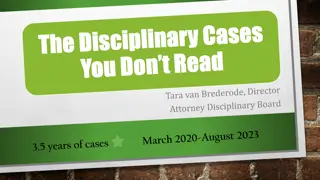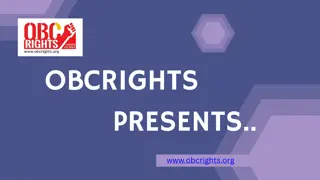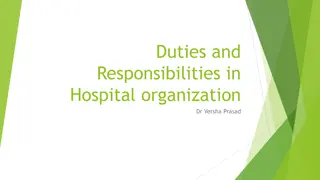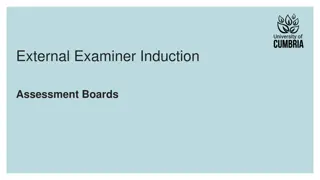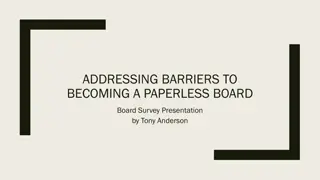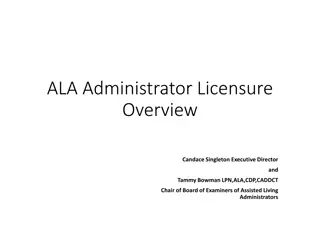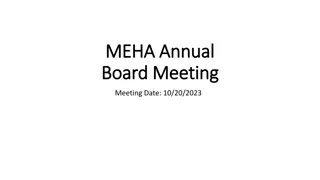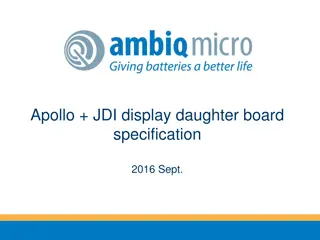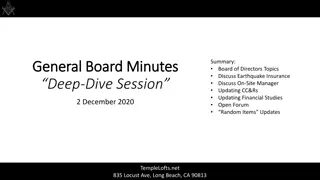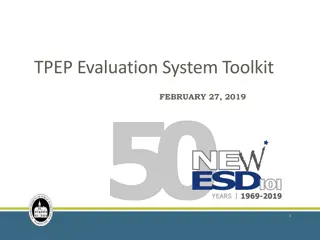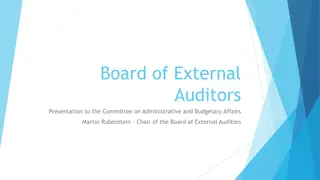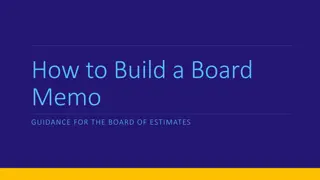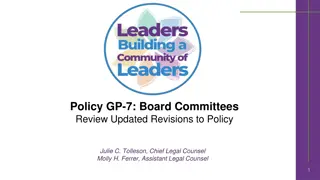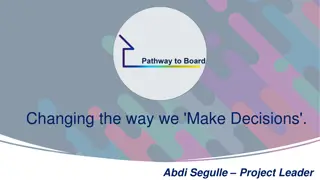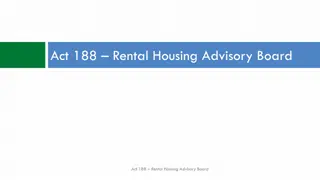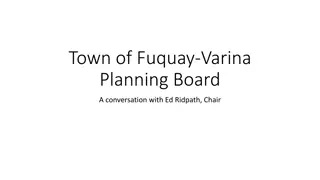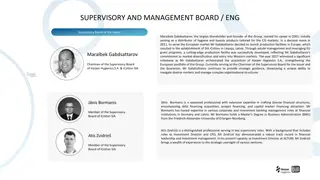
Washington State Teacher and Principal Evaluation Legislation Overview
Explore the legislation passed in Washington State in March 2010, including Engrossed Second Senate Bill 6696 (E2SSB 6696) and House Bill 6696. Learn about the requirements for teacher and principal evaluation systems, pilot projects, district adoption timelines, and pilot district requirements. Dive into the Evaluation Pilot program, its timelines, and the Steering Committee involved in the implementation process.
Download Presentation

Please find below an Image/Link to download the presentation.
The content on the website is provided AS IS for your information and personal use only. It may not be sold, licensed, or shared on other websites without obtaining consent from the author. If you encounter any issues during the download, it is possible that the publisher has removed the file from their server.
You are allowed to download the files provided on this website for personal or commercial use, subject to the condition that they are used lawfully. All files are the property of their respective owners.
The content on the website is provided AS IS for your information and personal use only. It may not be sold, licensed, or shared on other websites without obtaining consent from the author.
E N D
Presentation Transcript
New Legislation In March of 2010, the Washington State legislature passed Engrossed Second Senate Bill 6696 (E2SSB 6696), a law requiring the following: 1. Revision of the teacher and principal evaluation system. 2. A pilot project that would provide funding to selected districts that would then develop systems that would align to the new requirements. 3. All districts in the state of Washington are required to adopt evaluation systems that align to the new requirements by the 2013- 14 school year.
House Bill 6696 The intent of the bill is to create teacher and principal evaluation systems to support student achievement. The bill requires the following: All school districts are to submit information to OSPI regarding their current evaluation systems, including evaluation criteria, the number and description of each rating, and the number of staff in each rating. Extension of provisional status for new teachers Professional Growth Option must be linked to one of the 8 criteria Development of four-tiered rating systems based on eight new classroom teacher and eight principal competencies
Evaluation Pilot Wenatchee applied and was selected for a grant to participate in the development of the new teacher and principal evaluations and pilot the use of the new systems. Allotted $128,000 in grant funds to support our work We are one of 8 districts participating in the pilot, plus 1 ESD Consortium
Evaluation Pilot Timelines 2010-2011 Develop evaluation tool and system 2011-2012 Pilot new evaluation 2012-2013 Second year to pilot and modify 2013-2014 Full implementation of new evaluation system in all school districts in Washington State
Requirements in 6696 for the Pilot Districts? New models must be aligned to the new 8 criteria and utilize 4-tiered rubrics Identification of, or development of, appropriate multiple measures of student growth Professional development programs and evaluator training for teachers and principals The new tools must be piloted and evaluated during the 2011-12 school year
Steering Committee Steering Committee Brian Flones, Jon DeJong, Lisa Turner, Gayle Northcutt Fay Crawford, Mark Helm, Chris Cloke, Mark Woolsey Lead the work Participate with OSPI for guidance OSPI and WEA have provided invaluable support Rigorous Timelines
What we have learned We must develop this work collaboratively We are far ahead of many districts in our willingness and ability to work collaboratively We have to develop/create the work on our own. We must have buy-in in our culture Cut-Line what it means The professional development for implementation will change the way we look at PD This will be an on-going process
Teacher Committee Elementary Teacher - Middle Teacher - High School Teacher - Elementary Principal - Middle Principal - High School Principal - Administrator- Administrator- WenEA Bargaining Rep- WenEA Representative- Steering Committee Teacher Rep- Coni Carlquist Susan Cox John Spencer Fay Crawford John Waldren Kory Kalahar Lisa Turner Jodi Smith Evelyn Kellogg Gayle Northcutt Chris Cloke
Evaluation Committee Work Process Review of the Research Identify the characteristics of effective evaluation to guide the development of the evaluation tools Identify the characteristics of effective instruction/leadership Get feedback from our staff what works, what could be better Evaluation Tool Format Review the new criteria & compare with existing criteria Review current evaluation tools Look at sample evaluation tools Agree upon the format for the new evaluation tools and the 4 tier language
Evaluation Committee Work Process Alignment of existing descriptors to the new criteria Creation of new descriptors based upon gaps between existing tools and the characteristics of effective instruction/leadership Identification of Evidence/Measures for evaluating the performance criteria Identification of multiple measures of student growth and models for the use of data Pilot Plan Selection of participants for the pilot year Professional Development Plan for use of the new tools Calibration training Develop a plan for evaluating the new tools
Teacher Work Process Unwrapping the Criteria Develop the rubric for the 4 tiers Develop an Instructional Framework Develop Professional Development
Teacher Criteria Centering instruction on high expectation for student achievement 1 Demonstrating effective teaching practices 2 Recognizing individual student learning needs and developing strategies to address those needs 3 Providing clear and intentional focus on subject matter content and curriculum. 4
Teacher Criteria Fostering and managing a safe, positive learning environment 5 Using multiple student data elements to modify instruction and improve student learning 6 Communicating with parents and school community 7 Exhibiting collaborative and collegial focus on improving instructional practice and student learning 8
Principal Committee Elementary Teacher - Middle Teacher - High School Teacher - Elementary Principal - Middle School Principal - High School Principal - Administrator- Administrator (Director)- Steering Committee Principal Rep- WenEA Representative- Steering Committee Teacher Rep- Leslie Peterson Kathy Sadler Brian Lee Mark Goveia Bill Eagle Jeff Johnson Jon DeJong Colleen Obergh Mark Helm Chris Ferrians Mark Woolsey
Principal Criteria Creating a school culture that promotes the ongoing improvement of learning and teaching in students and staff. 1 Providing for school safety 2 Leads development, implementation and evaluation of data-driven plan for increasing student achievement, including the use of multiple student data elements. 3 Assisting instruction staff with alignment of curriculum, instruction and assessment with state and local district learning goals. 4
Principal Criteria Monitoring, assisting, and evaluating effective instruction and assessment practices 5 Managing both staff and fiscal resources to support student achievement and legal responsibilities 6 Partnering with school community to promote student learning 7 Demonstrating commitment to closing the achievement gap 8
Principal Work Process Review of the Research Identify research-based characteristics of effective principal evaluation to create a rubric for the development of the evaluation tools. Identify the characteristics/standards of effective leadership
Principal Work Process Evaluation Tool Format Review current evaluation tools & feedback on strengths and weaknesses of the tool Look at sample evaluation tools using the rubric and identify aspects for implementation into the new WSD tool Agree upon the format for the new evaluation tools and the 4 tier language
Principal Work Process Rubric Development Discuss and unwrap each criterion using sample evaluation tools, the crosswalks document, and the affinity process Write the gold standard for each criterion Align sub-components or indicators to each gold standard and differentiate language for each of the 4 tiers
Principal Work Process Development of the evaluation process Identification of Evidence/Measures for evaluating each of the performance criteria Create a differentiated process for evaluation, including timelines, forms for goal-setting, and the summative evaluation
Principal Work Process Implementation Develop pilot plan Selection of participants Professional Development Plan for use of the new tools Calibration training Develop a plan for evaluating the new tools
Communication with stakeholder groups Newsletter District Website Meetings WenEA Rep Council Principals meeting Building meetings Parent Involvement Involve parents on criterion 7 rubric development
Goals of the Committees Develop evaluation tools that reflect current research and promote professional growth Review the current tools and retain those aspects that are effective and eliminate or revamp those aspects that are not We will build off of previous work and experiences Effectively use multiple measures of student growth for building/instructional improvement Develop tools that are truly beneficial, not just the fulfillment of a requirement Develop a teacher/principal evaluation system that reflects the WSD vision of becoming a world class school district



